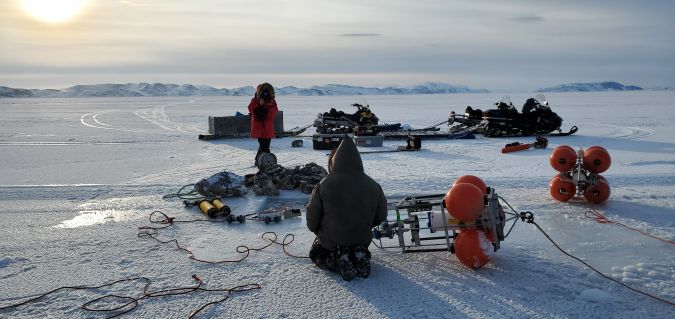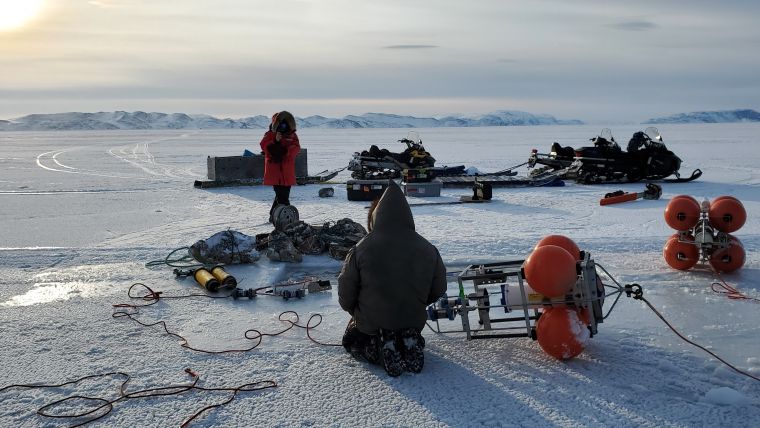AZFP6-ice Deployed to Examine Ice Characteristics and Biological Activity
A prototype of the AZFP6-ice was deployed in the coastal waters approximately 40km east of the town of Nain, Labrador (Canada), an area used for Indigenous traditional hunting and fishing. This deployment was carried out by ASL in collaboration with the Inuit Nunatsiavut Government in October 2021 and will be recovered in autumn 2022. The AZFP6-ice combines the technology of the Ice Profiling Sonar (IPS) with its ability to detect ice draft along with the calibrated Acoustic Zooplankton Fish Profiler (AZFP) echosounder to examine zooplankton, fish, bubbles and suspended sediments within the water column.
The upgraded IPS component used in this unit includes a logarithmic detector to prevent signal saturation of strong targets while at the same time still providing information on weak targets. This revised version of the IPS is referred to as the Log IPS. The AZFP6-ice at this site will be used to better understand the impact of climate change on the ice and biology of the region.
Bioacoustics Echosounders
A notable ocean-ice feature in this region are year-round ice-free areas, locally referred to as rattles or polynya. These year-round ice-free areas are considered biologically rich. Placement of the mooring this year was ‘downstream’ from a known rattle location in order to provide insights into the biological activity and ice dynamics associated with this ice-free feature. The results from a Log IPS deployed approximately 500m away, as well as two previous years of IPS data collected in this location, will provide a useful comparison with the new AZFP6-ice data along with the now added benefits of the bioacoustics echosounders.
Enhanced Backscatter at the Air-Water Interface
Log IPS data from a previous deployment from 2020/2021 revealed a dynamic environment with some days exhibiting a full range of open water, waves, flat level ice and moderately sized keels measuring up to 13m drafts. This instrument had a sampling rate of 2Hz and was deployed through the ice at a depth of about 100m on 15 February 2020 and recovered 263 days later on 27 October 2020. With the improved capabilities of the logarithmic detector, the instrument detected enhanced backscatter at the air-water interface, suggesting the potential of the instrument to resolve the presence of frazil ice and differentiate between consolidated and unconsolidated ice.
With this year’s deployment of the AZFP6-ice, further insight will shed light on this dynamic region and provide useful information to help manage the associated risks for those that traverse this area.















